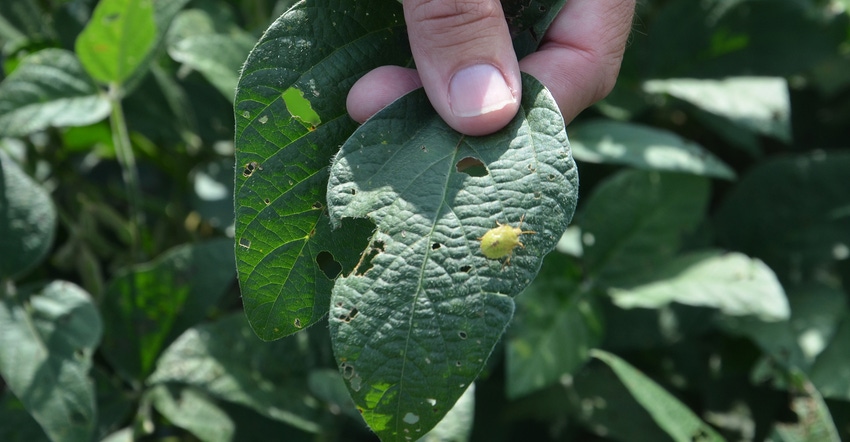
Odds are most of your soybeans were planted late. If you think that means you don’t need fungicides or insecticides, you could make a costly mistake, Steve Gauck says.
Gauck is a sales agronomist for Beck’s near Greensburg, Ind. Beck’s sponsors Soybean Watch ’19.
He understands why your first reaction might be to forgo spraying this year. The crop is very late, so you might assume yield potential will be lower. Plus, since beans were planted late, you might think certain diseases are less likely to show up.
“The reality is, you need as many bushels to sell as you can get,” Gauck says. “That’s how you’re going to add gross income.
“Besides, assuming diseases and insects won’t be an issue could be costly. First, we have more soybeans planted following soybeans than many people intended because they switched to beans instead of corn. Diseases tend to intensify when soybeans follow soybeans, even if it’s only for two years.”
Disease by disease
Pod and stem blight caused poor-quality beans in 2018, particularly in the southern half of Indiana, Ohio and Illinois. The blight is caused by a fungus, and the pathogen can survive in soybean residue. Given the right conditions, it could return this year.
“We can’t rule out sudden death syndrome either,” Gauck says. “It tends to show up somewhere almost every year, no matter what the year is like.” Plus, it was cool and wet when many soybeans were planted and emerged in June. Those conditions favor SDS. Infection occurs when plants are small; then symptoms show up later. Spraying fungicides at R3 won’t help control SDS.
The ideal time to spray fungicides on soybeans is typically the R3 stage. Many fields may be in that stage, just approaching it or just moving out of it in early to mid-August this year. Even if you haven’t sprayed fungicides on soybeans before, if pod and stem blight was an issue in 2018, you might consider it this year, Gauck advises.
Insect by insect
Growers in northern Indiana counties and into Michigan will want to keep an eye out for soybean aphids, Gauck says. They haven’t caused major problems recently, but when they hit, they can trim yields quickly.
Stinkbugs were an issue for many growers in 2018 and contributed to poor grain quality as well. These insects suck juices from single beans and open the pod up to secondary infections. There’s no reason to suspect they won’t be back this year, Gauck says.
Whether or not to spray fungicides and insecticides together is a tough question, Gauck acknowledges. “We’ve seen a yield response to adding insecticide when we apply fungicide at the R3 stage in Beck’s Practical Farm Research trials,” he explains. “However, the R3 stage was too early for spraying stinkbugs last year. They didn’t show up until about the R5 stage.”
Stinkbugs can cause economic damage all the way to harvest if they’re present in high enough numbers. Whether you apply an insecticide with a fungicide or not, Gauck suggests continuing scouting, and treating for stinkbugs if they reach economic levels later in the season.
About the Author(s)
You May Also Like




